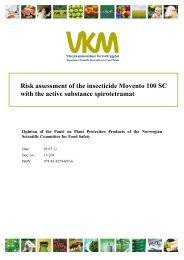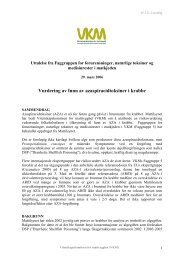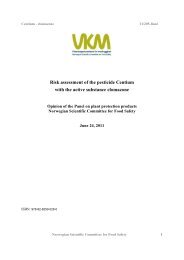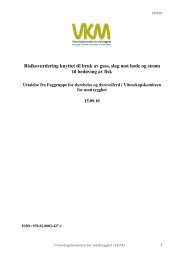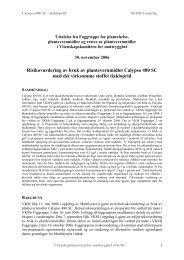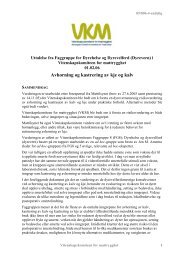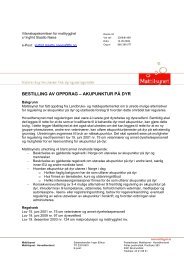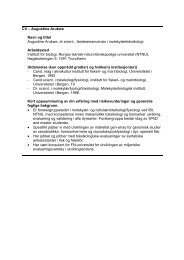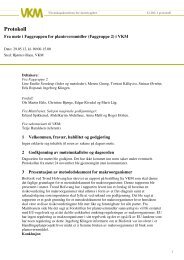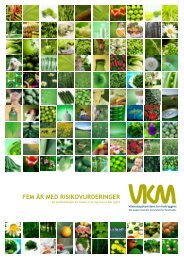Pest risk assessment of the Cucumber green mottle
Pest risk assessment of the Cucumber green mottle
Pest risk assessment of the Cucumber green mottle
Create successful ePaper yourself
Turn your PDF publications into a flip-book with our unique Google optimized e-Paper software.
07/207-4 FinalDiseased plants were observed in July 2007. A sample sent to Bi<strong>of</strong>orsk was diagnosed asCGMMV. It was decided to continue production until <strong>the</strong> end <strong>of</strong> October. The grower did nothave any crop loss in late summer, but <strong>the</strong>re was increasing damage in September andOctober.This implies that late infections do not cause dramatic yield loss. However, <strong>the</strong> occurrence <strong>of</strong>CGMMV requires <strong>the</strong> grower to carry out every possible measure to control <strong>the</strong> virus and getrid <strong>of</strong> possible infection sources before <strong>the</strong> start <strong>of</strong> a new season.All plants were removed from <strong>the</strong> <strong>green</strong>houses in October - November 2007 and intensivecleaning and disinfection programs have been followed. It is not possible to know if <strong>the</strong>re hasbeen a successful control <strong>of</strong> CGMMV at this grower before cucumber production starts againin early 2008.4.1.6 Regulatory statusNorway: No regulationEPPO: No regulationEU: No regulation4.1.7 Biological characteristics <strong>of</strong> <strong>the</strong> pest4.1.7.1 Interaction host/pestCGMMV has a narrow host range, as most isolates are confined to a host range mainly withinCucurbitaceae (Hollings et al. 1975).<strong>Cucumber</strong> is <strong>the</strong> only known host plant for CGMMV among cultivated species in Norway.O<strong>the</strong>r susceptible hosts such as melon and watermelon are not grown commercially in <strong>the</strong>PRA area.In a field with CGMMV infected watermelon in Greece, weeds were also investigated aspotential hosts (Bourbourakas et al. 2004). The following weeds were found to be infected byCGMMV:Amaranthus blitoidesA. retr<strong>of</strong>lexusChenopodium albumHeliotropium europeumPortulacea oleraceaSolanum nigrumC. album and S. nigrum are also common weeds in Norway. Whe<strong>the</strong>r CGMMV infects <strong>the</strong>sespecies in Norway is not known.4.1.7.2 Disease cycleCGMMV has, like o<strong>the</strong>r viruses in <strong>the</strong> genus Tobamovirus, very stable particles. Theseviruses are spread by mechanical transmission without any vector. Seeds <strong>of</strong> susceptiblespecies can have infective virus particles in <strong>the</strong> seed coat that can infect <strong>the</strong> seed plant whengerminating (Hollings et al. 1975, Fletcher et al. 1969).Norwegian Scientific Committee for Food Safety 15



